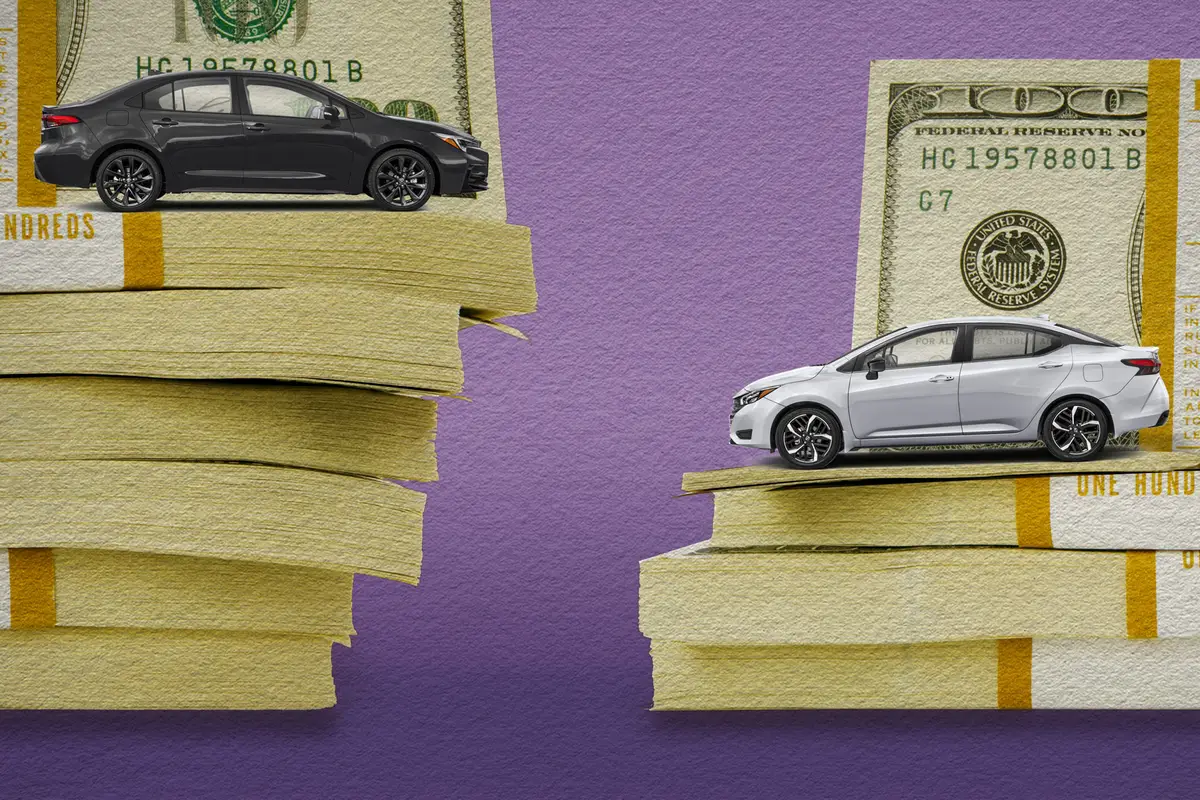washingtonpost.com's view
Proving Itself in Snow and Slush
2004 Audi TT 3.2 Quattro Roadster
LAS VEGAS
Automotive gods work in mysterious ways. Consider this week’s test car, the 2004 Audi TT 3.2 Quattro Roadster. It arrived at my house in Northern Virginia hours before a snowstorm.
Automotive journalists frequently test-drive sports cars under ideal road and track conditions, such as the bright, spring-like weather blessing my visit here. Most cars perform well under those circumstances. We journalists, as a result, often fall in love with them.
So, perhaps, there was a bit of divine instruction in the timing and location of my TT 3.2 Quattro run. After all, “Quattro” is Audi-speak for all-wheel-drive; and the best way to test an all-wheel-drive system is to drive it through ice and snow.
The TT 3.2 Quattro worked perfectly. It never got stuck, never skidded. It handled well enough in the mush to help me avoid a possibly calamitous crash with an out-of-control, mid-size Isuzu Rodeo SUV in Falls Church.
It was a typical bit of motorized stupidity. The Isuzu driver was running at a speed that would have been illegal even in good weather — about 35 miles per hour in a clearly marked 25-mph zone. I was behind the Isuzu as it sped toward a yellow light, apparently trying to clear the intersection before the light turned red. But the driver had a change of mind and slammed on the brakes, sending the Isuzu into a spin that put me in danger.
I tapped the test car’s brake pedal, activating its front and rear ventilated discs and an array of electronic brake assistance devices. Those included the TT 3.2 Quattro’s anti-lock and electronic brake force distribution systems, the latter of which automatically modulates braking pressure at each wheel.
The test car responded immediately, halting without a hint of directional instability. A quick left turn to avoid the oncoming Isuzu also was completed excellently. That surprised me.
Since the introduction of its hardtop coupe in 2000 and its soft-top roadster in 2001, the Audi TT has always been a physically attractive, fun-to-drive car. But it was a bit soft and wiggly in the handling department, largely because of its un-coupe-like and un-roadster-like weight exceeding 3,000 pounds.
The new TT 3.2 Quattro Roadster is a bit of a fatty, too, tipping the scales at a curb weight (factory weight minus passenger and cargo) of 3,472 pounds. But Audi did more than put a bigger engine — a 3.2-liter, 250-horsepower V6 — in the new car. It beefed up the suspension work as well.
Thus, there is a discernibly favorable difference in the speed, handling and feel of the new car versus its predecessors. It is an all-around more capable vehicle.
That capability includes an improved transmission, which Audi calls the “direct shift gearbox” (DSG). On the surface, it’s just another one of those “twofer” transmiss ions that can be operated as an automatic or manual. But there’s more to it than that.
DSG is a thinker. As it engages one gear, it automatically pre-selects the next based on the speed and movement of the car. The clutch opens for the engaged gear as the clutch of the next pre-selected gear closes. The process yields very quick shifts and an uninterrupted flow of power. It made me a believer in auto-manual transmissions.
Normally, I am one of those recalcitrant gear-heads who thinks that his unaided manual shifting skills are better than those of an automatic transmission. It is a conceit more embedded in bravado than common sense.
The truth is that I might have smacked that Isuzu in the few seconds I would have needed to operate a traditional manual transmission in that panic situation. I didn’t, thanks to the people who developed DSG. For that, I’m truly appreciative.
Nuts & Bolts
Downside: The weight! For a small, two-seat car, the TT 3.2 Quattro is too heavy. The best sports cars are those that have a wonderful lightness of being.
Ride, acceleration and handling: Excellent in all three categories, despite the weight. It makes me wonder how this car would feel if it shed a couple of hundred pounds, or more.
Body style/layout: The TT 3.2 Quattro Roadster is a front-engine, all-wheel-drive car with an automatic convertible top. The TT is available as a coupe or a roadster in all-wheel-drive or front-wheel-drive.
Engine/transmission: The TT 3.2 Quattro Roadster is equipped with a 3.2-liter, 30-valve V6 engine that develops 250 horsepower at 6,300 revolutions per minute and 236 foot-pounds of torque at 2,800 rpm. The engine is linked to an automatic transmission that can be operated manually. The Audi TT roadster and coupe also are available with turbocharged, four-cylinder engines that can be tuned for either 180 or 225-horsepower, and can be mated with a six-speed manual or an automatic transmission.
Capacities: The test car has seating for two people and cargo space for a couple of small overnight bags. Fuel capacity is 16.3 gallons of gasoline. Premium unleaded is required.
Mileage: I averaged 22 miles per gallon in combined city and highway driving. That weight!
Safety: Seat-mounted side and head air bags are standard. Rear roll bars.
Price: Base price is $42,900. Dealer invoice price on base model is $38,719. Price as tested is $48,000, including a whopping $5,180 in options (such as Napa leather seats) and a $720 destination charge.
Purse-strings note: Great toy. Compare with BMW Z4 and Porsche Boxster. Yes, I know. I’ll do an inexpensive car next week.
Latest news



